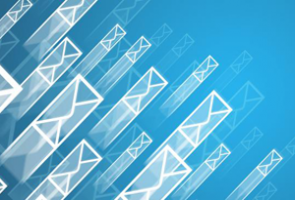I’ve mentioned it before, but I think it’s important to say it once again: Email is important. It’s still the most powerful marketing tool you have, and yet many, many marketers and business owners neglect it. The truth is, when it comes to relationship building, there isn’t an easier way to go about it than with email.
I’ll get several of the preliminaries out of the way first since there is so much content and advice out there on this subject. I just feel like these few points should be in the forefront of your mind as we continue this conversation.
Be consistent – That means both with your brand message and with the frequency at which you send messages out to your list. When done right, the best segments of your list will actually look forward to hearing from you. Honestly, that’s the entire aim here: present something that’s readable and engaging. That brings me to my next point…
Maintain high standards of quality – This involves making sure that the writing is always above average and that you send out as few typos or blatant grammatical and spelling errors as possible. Yes, there are some very effective email methods out there that throw notions of grammar completely out the window, but some audiences will pick up on that and decide that you’re not made of the right stuff. That brings me to my final point…
Always keep the focus of your email on your primary audience – If your customers or leads are going to go all “grammar police” on you, it’s important always to communicate on their level. I trust you know where to draw that line based on your research. If not, you probably haven’t developed an ideal avatar or buyer persona and, really, you should.
The 5 Steps to Building Relationships with Email
If you want to grow your list fast and start minimizing your spend on more expensive advertising options, there are five things I always recommend my clients do. I also help put them in front of writers who can help with the creative end of things.
1. Identify and focus on one specific problem or pain point in your series. At the end of the day, the best and most effective emails are the ones that tell stories wherein the audience identifies with the voice in the email. People want to know that others share their concerns and frustrations. The term “misery loves company” is a true one – people relate better to tears than to laughter so the focus of your message needs to be one specific problem.
2. Promise a solution. Your audience needs to know that you can not only relate to the problem, but also know how to solve it. You don’t have to immediately start hawking a product at this point. In fact, it’s better if you don’t. Take the reader on a journey. Make yourself vulnerable. Talk about your feelings. Talk about your frustrations. It was a long, hard road you took to get to the solution to this problem, now you want to offer it up in a way that will provide instant relief and peace of mind.
3. Present your solution. At this point, if you’ve taken your time with this, you should have latched on to one or more things that your readers can relate to, and that will take you a long way in convincing them that you’ve really got the solution to your problem. I recommend not firing off a high-pressure sales pitch at this point; just let them know the solution is there, present them with a link to learn more, and let them make the decision. People like to feel as if they are always in control.
4. Nurture your leads and reassure your customers. You do this by staying in touch, by encouraging action every single time you follow-up, and by making it super-easy to stay plugged in. Links to relevant landing pages or pages on your website should be included throughout the body of your email, including the postscript.
This is the point where you can both needle at the pain points but also drive the reader headlong back into the direction of the solution. Those who have already decided to be your customers will take a high degree of reassurance from the fact that you know what they’re going through and are helping them past those barriers and pain points. Those on the fence will recognize your genuine concern and, at a minimum, keep reading. That’s a good lead-in to my last point here…
5. Always keep your readers engaged. By this, I don’t mean simply hurling a message at them every few days. You should always maintain high quality standards with the writing and come up with various topics you can use either in a single message or as the foundation for a follow-up sequence with a targeted segment of your list.
Sending the Right Message Every Time
Email is the best tool in your marketing toolbox, but it is very easy to neglect. This is why I always recommend finding a copywriting company or freelancer who can help you maintain a regular presence in the lives of your customers or leads. This eliminates a plethora of issues that could otherwise bring your email marketing efforts to a standstill. Keep in mind that consistency is imperative if you want your email marketing efforts to succeed; it is the cornerstone of effective relationship building through email.
